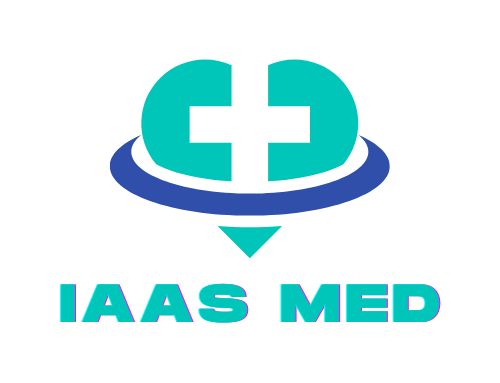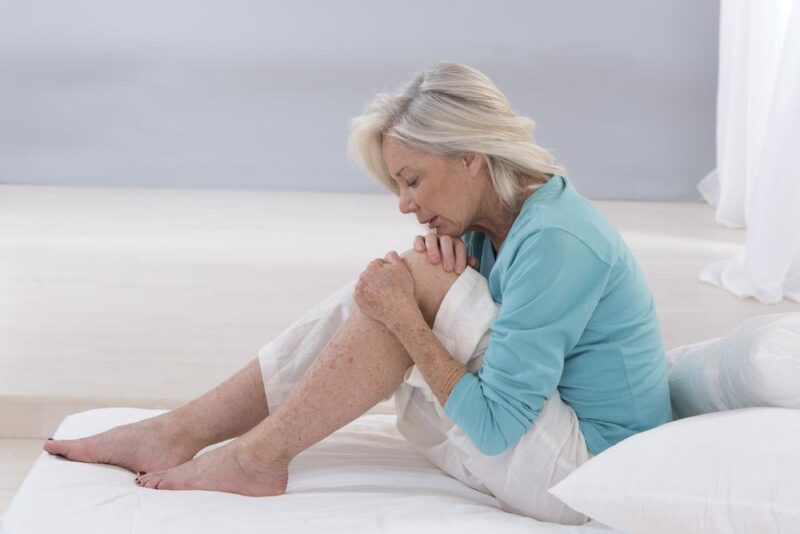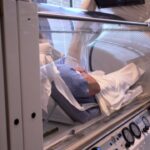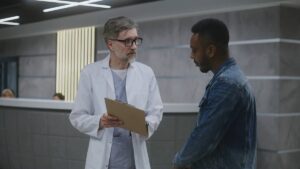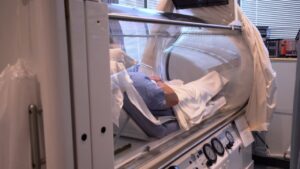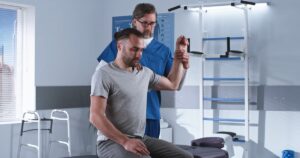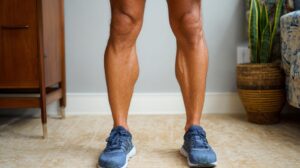Sclerotherapy is a widely used treatment for varicose and spider veins, offering both cosmetic and health benefits by reducing vein visibility and alleviating discomfort.
However, the success of this minimally invasive procedure heavily depends on how well you adhere to post-treatment care guidelines. Knowing what to avoid after sclerotherapy is just as crucial as following the prescribed aftercare instructions.
This article will guide you through the key “do not” actions to ensure optimal healing and long-lasting results, helping you avoid common pitfalls that could compromise your recovery.
Never Do These 8 Things After Sclerotherapy
- Do Not Engage in Strenuous Exercise
- Do Not Expose the Treated Area to Heat
- Do Not Stay in One Position for Too Long
- Do Not Drink Alcohol or Take NSAIDs
- Do Not Submerge the Treated Area in Water
- Do Not Skip Wearing Your Compression Stockings
- Do Not Ignore Post-Treatment Instructions from Your Doctor
- Do Not Expose Your Legs to Direct Sunlight
1. Do Not Engage in Strenuous Exercise
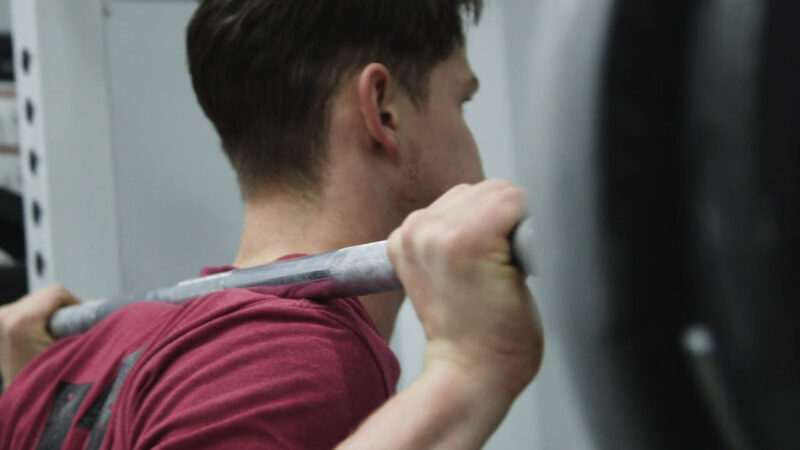
Engaging in strenuous physical activity immediately after sclerotherapy can significantly hinder the healing process and negatively impact the results of the treatment. Strenuous exercises, such as running, weightlifting, or high-intensity workouts, increase blood flow to the treated veins. This can dilute the sclerosant solution injected during the procedure, reducing its effectiveness in collapsing the targeted veins.
Why You Should Avoid Strenuous Exercise?
Your veins need time to close off and begin the process of being absorbed by your body. Strenuous activity can increase the pressure within these veins, potentially causing them to reopen. This not only delays healing but may also result in the need for additional treatments. Engaging in heavy exercise can also lead to bruising, swelling, or even the formation of blood clots in more severe cases.
Examples of Strenuous Exercises to Avoid
- Running: The repetitive impact of running can put undue pressure on the treated veins, increasing the risk of complications.
- Weightlifting: Lifting heavy weights can raise your blood pressure, which can cause treated veins to reopen or lead to other vascular issues.
- High-Intensity Interval Training (HIIT): The combination of rapid, intense movements and short recovery periods in HIIT can strain your vascular system, complicating the healing process.
Recommended Alternatives
Instead of strenuous exercises, light activities such as walking are encouraged. Walking helps maintain circulation without placing excessive stress on the treated veins. It’s also beneficial to wear compression stockings during these light activities to further support blood flow and reduce swelling.
2. Do Not Expose the Treated Area to Heat
Exposure to high temperatures causes veins to dilate, which can reverse the effects of the treatment by reopening the treated veins or increasing blood flow to them, potentially leading to complications.
Why Heat Exposure is Detrimental
The sclerosant solution used in sclerotherapy works by irritating the lining of the veins, causing them to swell shut and block blood flow. Heat, whether from external sources like hot baths, saunas, or even direct sunlight, can counteract this process by dilating the veins, making it more difficult for them to close properly. This can not only delay healing but also lead to adverse effects such as increased bruising, swelling, and discomfort.
Examples of Heat Sources to Avoid
- Hot Baths and Showers: Immersing yourself in hot water can cause the treated veins to expand, increasing the likelihood of reopening and complicating the healing process.
- Saunas and Steam Rooms: These environments are designed to induce sweating through heat exposure, which can significantly disrupt the healing of treated veins.
- Direct Sunlight: Sun exposure can cause the skin over the treated areas to become more sensitive and prone to pigmentation changes, particularly in those with darker skin tones.
Recommended Practices
Instead of exposing yourself to heat, opt for lukewarm showers and avoid hot baths for at least two weeks post-procedure. If you need to go outside, protect the treated areas by wearing clothing that covers the skin or applying a broad-spectrum sunscreen with a high SPF. This will help prevent any sun-induced damage and ensure that your skin heals without additional complications.
3. Do Not Stay in One Position for Too Long
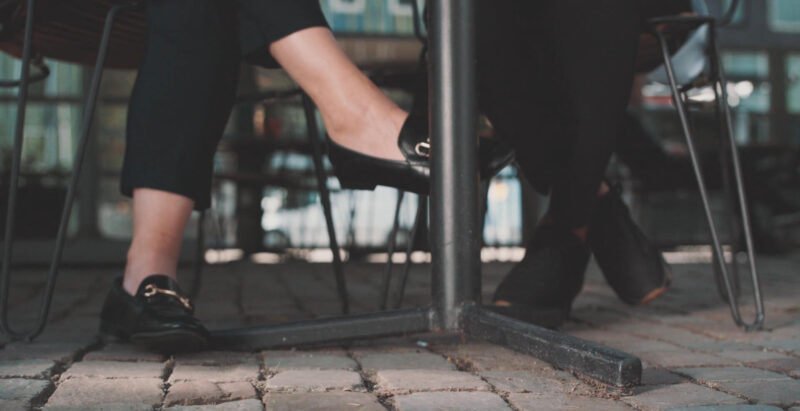
Prolonged sitting or standing can be detrimental to your recovery after sclerotherapy. Staying in one position for extended periods can impede blood circulation, leading to complications such as swelling, increased discomfort, or even the formation of blood clots in the treated veins.
Why Avoiding Prolonged Inactivity is Crucial?
After sclerotherapy, your veins are in a delicate state as they begin to heal and gradually get reabsorbed by your body. Blood flow plays a significant role in this healing process. When you sit or stand still for too long, blood can pool in the legs, putting pressure on the treated veins. This pressure can counteract the effects of the procedure, leading to complications such as inflammation, swelling, or even the reopening of the treated veins.
Examples of Situations to Avoid
- Long Flights or Car Rides: Extended periods of sitting, such as during long flights or car rides, can increase the risk of blood clots, especially in the legs. If you must travel, take frequent breaks to walk around and stretch your legs.
- Standing for Extended Periods: Jobs that require long hours of standing, like retail or hospitality work, can contribute to poor circulation in the legs. If standing for long periods is unavoidable, make sure to shift your weight frequently and take short walking breaks.
Recommended Alternatives
To counteract the effects of prolonged inactivity, incorporate light movement into your routine.
- Take Short Walks: Walking for just a few minutes every hour can improve circulation and aid in the healing process. This is especially important if your job requires long periods of sitting or standing.
- Leg Elevation: When sitting, try to elevate your legs slightly to reduce pressure on the veins and promote better blood flow. This can be particularly helpful in reducing swelling and discomfort.
4. Do Not Drink Alcohol or Take NSAIDs
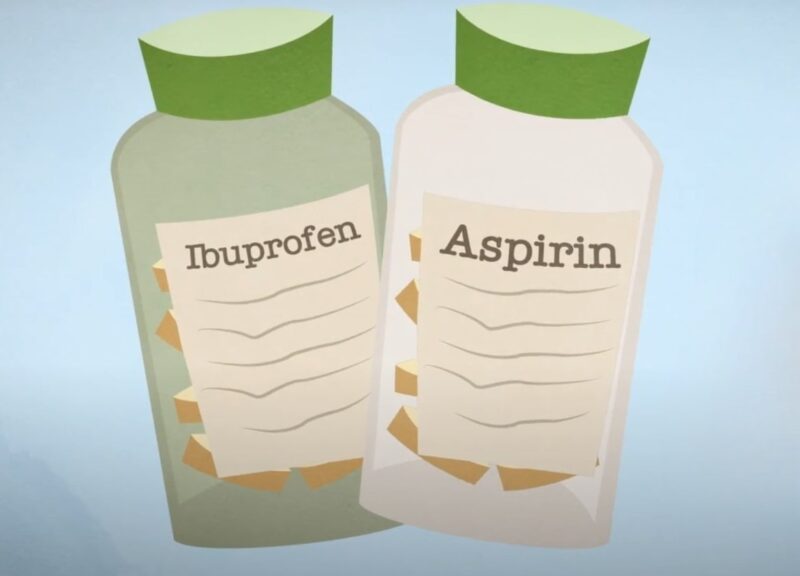
After sclerotherapy, it is essential to avoid consuming alcohol and certain medications, particularly non-steroidal anti-inflammatory drugs (NSAIDs) like aspirin and ibuprofen. Both alcohol and NSAIDs can thin the blood, increasing the risk of bleeding and potentially interfering with the healing process of the treated veins.
Alcohol has a dehydrating effect on the body and can impair the healing of your veins by thinning the blood and dilating blood vessels. This can lead to increased bruising, swelling, and a higher likelihood of complications such as bleeding or the reopening of treated veins.
NSAIDs, including common over-the-counter medications like aspirin, ibuprofen (Advil, Motrin), and naproxen sodium (Aleve), also have blood-thinning properties. These medications can interfere with the body’s natural clotting mechanisms, making it more difficult for the treated veins to seal off and heal properly. Additionally, they can increase the risk of developing small skin sores or prolonging any bruising around the injection sites.
All types of alcoholic drinks, including wine, beer, and spirits, should be avoided for at least 48 hours after the procedure.
For pain relief, use medications that are safer in the post-sclerotherapy period. Acetaminophen is generally recommended because it does not affect blood clotting and is less likely to interfere with the healing process.
5. Do Not Submerge the Treated Area in Water
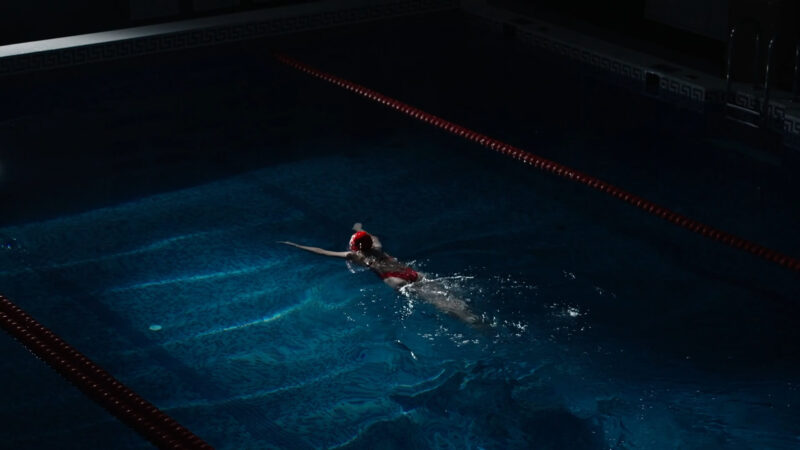
Submerging the treated area in water can significantly interfere with the healing process after sclerotherapy. This includes avoiding baths, swimming pools, hot tubs, and any other activities that involve soaking the treated area in water for an extended period.
Why Submersion Should Be Avoided
The injection sites used during sclerotherapy are delicate and need time to heal properly. Submerging these areas in water can introduce bacteria and other contaminants that increase the risk of infection. Additionally, soaking the treated veins in warm or hot water can cause them to dilate, counteracting the effects of the treatment and potentially leading to complications such as reopening of the veins or increased swelling.
Examples of Activities to Avoid
- Bathing: While quick showers are generally safe 24 hours after the procedure, taking baths should be avoided for at least 48 hours. The prolonged exposure to water can soften the skin and open the injection sites, making them more susceptible to infection and irritation.
- Swimming: Whether in a pool, lake, or ocean, swimming should be avoided for at least 48 hours after sclerotherapy. Pools contain chlorine, which can irritate the skin, while natural bodies of water may harbor bacteria that could cause infections.
- Hot Tubs: The heat from hot tubs can dilate the veins, undermining the success of the treatment. Additionally, hot tubs often contain high levels of bacteria, which can increase the risk of infection.
Recommended Practices
- Showering: You can shower 24 hours after sclerotherapy, but keep the water lukewarm and avoid directing strong jets of water at the treated area. Gently pat the area dry afterward rather than rubbing it with a towel.
- Cleaning the Area: Use mild soap and water to clean the treated area if necessary, but avoid scrubbing or applying any harsh products that could irritate the skin.
6. Do Not Skip Wearing Your Compression Stockings
Wearing compression stockings after sclerotherapy is one of the most critical aspects of your post-treatment care. These specially designed garments provide graduated pressure on the legs, which helps reduce swelling, improves blood flow, and supports the healing process of the treated veins.
Compression stockings work by applying the most pressure at the ankle and gradually decreasing the pressure as they go up the leg. This helps to keep the treated veins closed and prevents blood from pooling in the lower extremities. By promoting better circulation, these stockings help reduce the risk of blood clots, minimize swelling, and improve overall comfort during the recovery period.
Main Benefits
- Reduced Swelling: Compression stockings help to reduce post-procedure swelling by preventing fluid from accumulating in the treated areas. This is particularly important in the first few days after sclerotherapy when the risk of swelling is highest.
- Improved Healing: By supporting the veins and promoting proper circulation, compression stockings can speed up the healing process and improve the overall results of the treatment.
- Prevention of New Vein Formation: For individuals who are prone to varicose veins, wearing compression stockings as recommended can help prevent the formation of new veins by reducing pressure on the vascular system.
7. Do Not Ignore Post-Treatment Instructions from Your Doctor
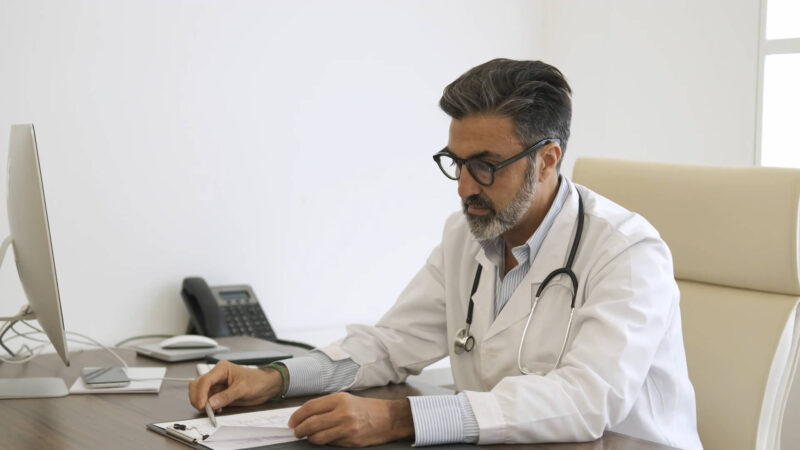
Your doctor may advise you on which medications to take or avoid after the procedure. For instance, you may be instructed to avoid NSAIDs like aspirin or ibuprofen, which can thin the blood and increase the risk of bleeding. Instead, acetaminophen may be recommended for pain relief.
As mentioned earlier, you’ll likely be advised to avoid strenuous activities for a specified period. However, your doctor might also recommend light activities like walking to encourage circulation without putting undue stress on the treated veins.
If you have any questions or concerns about your recovery, it’s essential to communicate with your healthcare provider.
8. Do Not Expose Your Legs to Direct Sunlight
After undergoing sclerotherapy, it is crucial to protect the treated areas from direct sunlight. Exposure to UV rays can cause several issues, including skin discoloration, delayed healing, and the potential worsening of any bruising or swelling that may have occurred during the procedure.
Why Sun Exposure Is Harmful Post-Sclerotherapy
The treated veins and surrounding skin are particularly sensitive after sclerotherapy. Direct sunlight can cause the skin to darken, a condition known as hyperpigmentation, which may be long-lasting or even permanent. This risk is especially high for individuals with darker skin tones or those prone to developing pigmentation changes.
Additionally, the heat from the sun can cause the veins to dilate, counteracting the effects of the treatment and potentially leading to complications such as increased swelling or irritation.
Recommended Protective Measures
- Use Sunscreen: If you need to be outdoors, apply a broad-spectrum sunscreen with a high SPF (at least SPF 30) to the treated areas. Reapply every two hours or more frequently if you are sweating or swimming.
- Wear Protective Clothing: Long sleeves, pants, and wide-brimmed hats can provide an additional layer of protection against the sun. Choosing light, breathable fabrics will keep you comfortable while protecting your skin.
- Stay in the Shade: Whenever possible, stay in shaded areas to minimize direct sun exposure. Plan outdoor activities during early morning or late afternoon when the sun’s rays are less intense.
FAQs
Can I Fly or Travel Long Distances After Sclerotherapy?
Yes, but with caution. If you need to fly or travel long distances shortly after sclerotherapy, it’s important to take measures to prevent blood clots, such as walking frequently and wearing compression stockings during the journey. It’s generally advisable to wait at least a week before embarking on long trips to minimize risks.
What Should I Do if I Experience Pain or Discomfort After Sclerotherapy?
Mild discomfort and pain are common after sclerotherapy, but if the pain becomes severe, or if you experience symptoms like swelling, redness, or heat in the treated area, contact your healthcare provider immediately. They may recommend over-the-counter pain relievers or other interventions to manage your symptoms.
How Soon Can I Resume Wearing Tight Clothing After Sclerotherapy?
Tight clothing that constricts the treated area should be avoided for at least a week after the procedure. Wearing loose, comfortable clothing helps ensure proper circulation and allows the treated veins to heal without additional pressure. Your healthcare provider may give specific recommendations based on your treatment.
Is Bruising Normal After Sclerotherapy, and How Long Will It Last?
Yes, bruising is a common side effect of sclerotherapy. The bruising typically appears within a day or two after the procedure and can last for several weeks. The duration may vary depending on individual factors like skin type and the size of the treated veins. If bruising persists or worsens, consult your healthcare provider.
When Can I Expect to See the Final Results of My Sclerotherapy Treatment?
The results of sclerotherapy can vary depending on the size and location of the treated veins. Smaller veins may show improvement within 3 to 6 weeks, while larger veins might take up to 4 months to fully resolve. In some cases, multiple treatment sessions may be necessary to achieve the desired results. Regular follow-up appointments with your healthcare provider will help monitor your progress.
Last Words
In conclusion, ensuring a successful recovery after sclerotherapy involves careful adherence to specific post-treatment guidelines. By avoiding common pitfalls and following your healthcare provider’s advice, you can minimize complications and achieve the best possible results from your treatment. Taking the necessary precautions will not only help in the healing process but also in maintaining the long-term benefits of sclerotherapy.
Related Posts:
- What to Eat and What Not- After Appendix Removal Surgery
- How Much Does Medicare Pay For Outpatient Surgery:…
- Weight Loss After Gallbladder Removal Surgery –…
- How to Restore Gut Health After Antibiotics
- How an MSN Degree Can Enhance Your Career After an ADN?
- List Of Foods to Avoid for a Smooth Recovery After…
